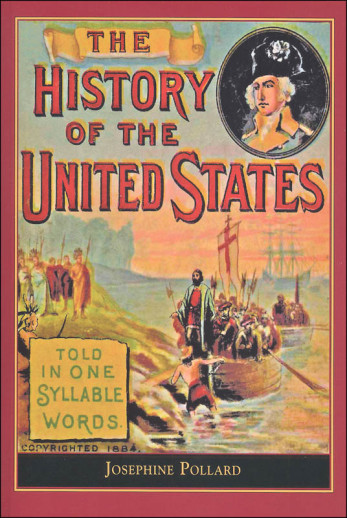We use cookies to make your experience better. To comply with the new e-Privacy directive, we need to ask for your consent to set the cookies. Learn more.
History of the United States Told in One Syllable Words
This exact replica reprint of an 1884 book is written in one syllable words and was originally used to teach children to read while teaching history. Evidently, it was common to write books "in one syllable" in the late 19th century. Of course, some multisyllabic words must be used (United, president, Tennessee, etc.), but these are divided into syllables to ease reading.
This book tells the story of our country from the first discovery of our continent by Norse men through the times of the Pilgrims, the Revolutionary War and the The Great War and takes a different attitude than some modern books. In the words of the author: "This is a tale in short words for small folks, on the way our land grew. . . . God has led us on through ways that have been strange, to reach the place where we now stand. The men of all the earth look on our land, and we are glad to have them call it THE LAND OF THE FREE and THE HOME OF THE BRAVE."
As a facsimile reprint, you'll note some idiosyncrasies that may seem odd to us. It is printed with two columns and the type size is relatively small (I estimate about 12 pt.) for an early elementary book. There are approximately 250 words per page. While the words are not difficult and quite readable, it may take a little time for your child to get used to the format. Also, rendering complex information into one syllable words has its challenges. Take for instance this passage about what would have then been a fairly recent event: "But we must now go back to the year 1876 when the U-ni-ted States kept its birth-day. Ten times ten years had gone by since A-mer-i-ca was made free, and the U.S. was born. By this time it was a great strong child." Obviously, there is a quaintness about the wording.
There are six original, full-page illustrations. Frankly, I'm impressed with these detailed renderings of historical events. By itself, this is an intriguing book - just for its historical value alone. Use it as a first reader or as a companion reader to a history study. Or, perhaps, use it to get an idea of what education in those one-room schoolhouses was all about. 130 pgs, pb. ~ Janice
Books containing words of one syllable proliferated in the late nineteenth century as a way to teach children to read. Today, these books still serve that purpose and are very popular with homeschoolers and parents as a way to promote reading. In this popular book from 1884, one-syllable words tell the history of the struggles and triumphs of the United States, touching on historic highlights from the land's sighting by Norsemen, through the times of the Pilgrims, and the Indian, Revolutionary and Civil Wars. Patriotic, informative, and historical, with multi-syllable words broken up into single syllables, this children's book remains a useful educational tool for teaching American history. Author Josephine Pollard wrote several one-syllable history books for children, as well as numerous juvenile biblical stories. Her History of the United States includes half a dozen illustrations of key events, and can be appreciated by book-lovers and history-lovers of any age.
| Product Format: | Paperback |
|---|---|
| Brand: | Applewood Books |
| Author: | Josephine Pollard |
| Grades: | 1-4 |
| ISBN: | 9781429020640 |
| Length in Inches: | 9 |
| Width in Inches: | 6 |
| Height in Inches: | 0.375 |
| Weight in Pounds: | 0.5 |

